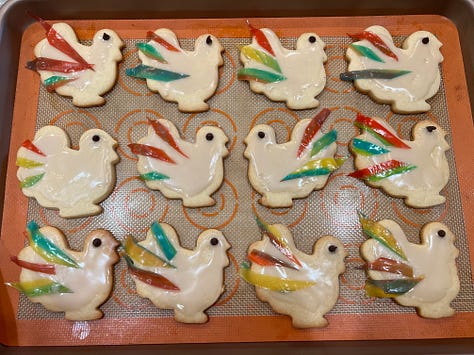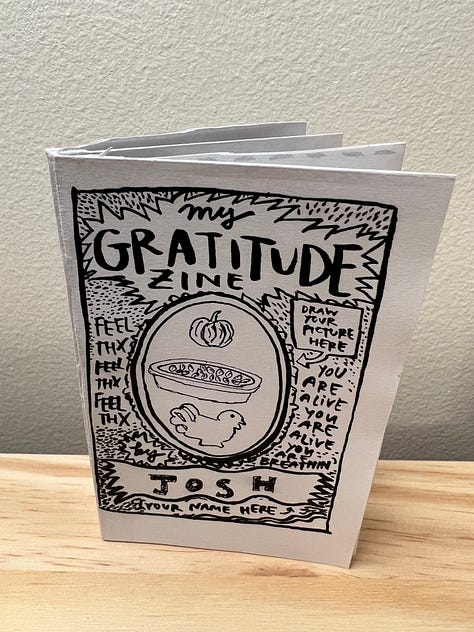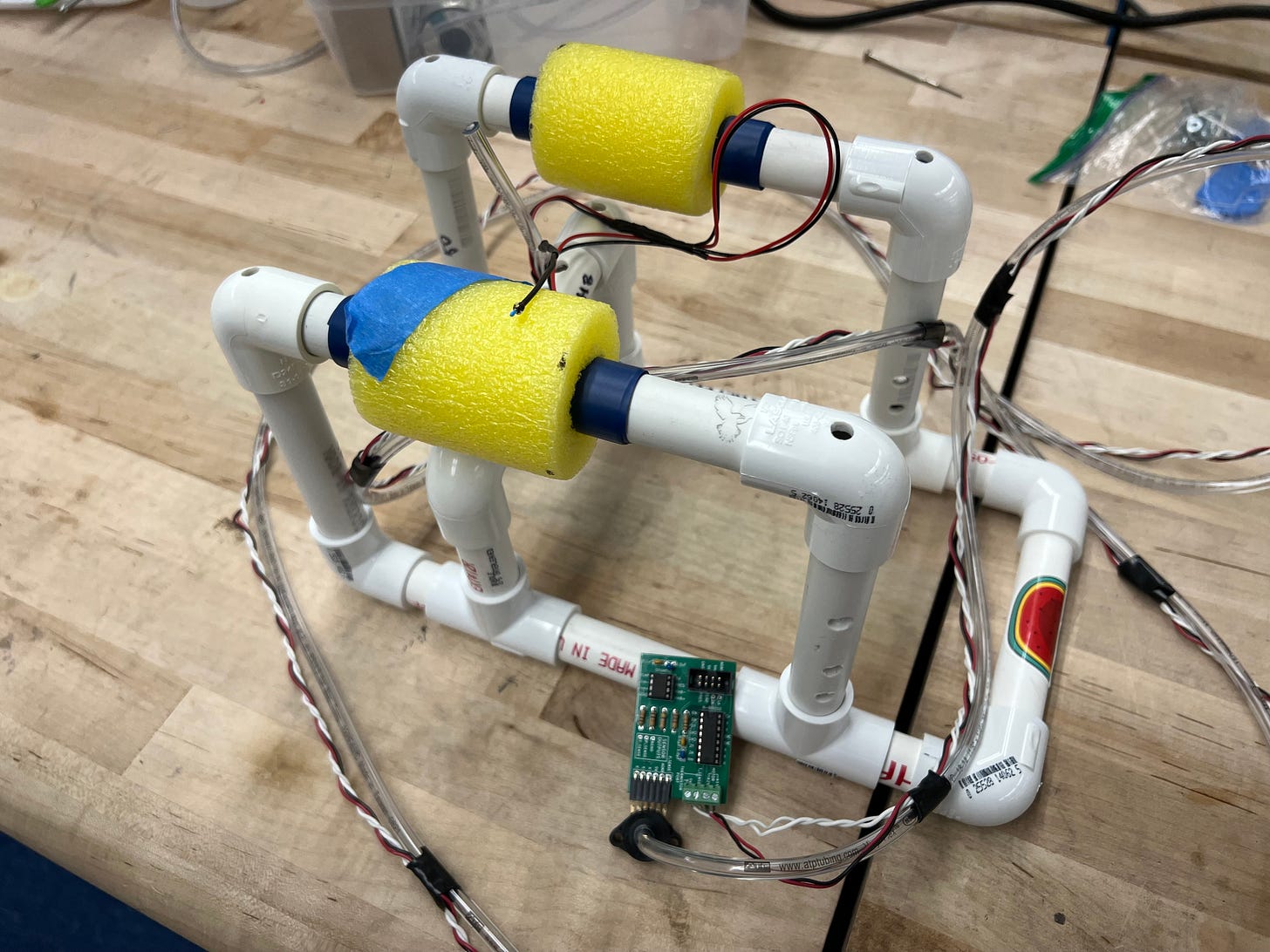(Hand)write More
I wrote the first draft of this essay by hand. Here's why you should pick up your pen and pad instead of sitting down at your keyboard next time you need to write something important.

This week I’ve been thinking about the impact of technology on writing. You’ve likely had a teacher somewhere along the line tell you the benefits of handwriting vs. typing, but let’s be honest, you probably just ignored them, even if you thought they might be on to something. I mean, typing is just so much easier, faster, and more efficient. So it must be better, right?
I hope you’ll join me with an open mind and consider picking up a pen and paper this week to give your penmanship skills a brush up and prototype writing something by hand.
Lessons from Neil Gaiman
The inspiration for writing more by hand came from a podcast interview I listened to last week with Neil Gaiman on Tim Ferriss’s podcast. Among other things, Neil shared about his obsession with fountain pens and some interesting thoughts about why he prefers to write the first draft of his books by hand.
As I’ve been reflecting on the interview, I’ve decided that handwriting is worth a second look, especially from a prototyping mindset perspective since writing by hand can help you to embrace divergent thinking, focus on a single task, and develop your writing voice.
1. Writing by hand encourages divergent thinking
Because typing in a word processor is so convenient, we often default to it. However, the ease with which we can edit, delete, and rewrite means that we are constantly allowing our internal editor to criticize. As we finish a sentence, we immediately look over it to see ways to improve it. This is exactly the type of behavior that we want to avoid in first drafts. Writing (especially in pen!) by hand eliminates this temptation and forces us to keep moving forward.
2. Writing by hand supports single tasking
Writing by hand can also help us to focus. In an environment where much of our day-to-day typing is done at a computer with multiple windows open at at once, it’s no wonder that we can so easily find ourselves jumping from tab to tab and frequently interrupting our flow. Writing on paper by hand forces us to avoid this.
Writing by hand also helps us to separate “research” and writing. So what if you don’t know a certain fact you want to include in your essay? Just do your best to recall it or leave a placeholder to fill in later and move on.
One of my favorite writing inspirations is Jerry Seinfeld. I love his philosophy of writing which treats writing and editing as two separate tasks. Writing by hand can help us to more easily achieve this separation.
3. Writing by hand changes how we think
My final point in defense of writing by hand is that it changes the tone of our writing. Gaiman shares how when he is writing by hand, he has to think differently than when typing. The permanence of the medium forces you to think in bigger chunks and focus on complete sentences instead of just starting and making it up as you go.
The ability to write clearly is one of the most important skills you can develop. Even if you don’t write by hand much, why not give it a shot this week and see how it might change the way that you interact with language and help you learn new ways of expressing yourself?
So what?
“The medium is the message” wrote philosopher Marshall McLuhan. This is a great reminder that we need to carefully consider the relative strengths and weaknesses of the ways that we communicate
The difference between writing by hand and typing reveals yet another facet of this idea. Even if we ultimately end up sharing our writing in a digital format, not all ways of getting from the initial thought to the end product are created equally. Writing by hand is often ignored in our computer-saturated environments, but maybe we ought to consider it, at least as a prototype experience, to see how it impacts our ability to think divergently, focus on the single task in front of us, and change the way we think as we write.
What do you think? Do you write much by hand? Why or why not? What’s the biggest argument for or against writing by hand that I missed? Drop me a line to let me know!
Book Nook
A few weeks ago I took a read through Never Split the Difference by Chris Voss. In the book, Chris, a former FBI hostage negotiator, teaches you several mindsets to help you in your next negotiation.
The book is engaging, weaving together case studies from Chris’s experience with the FBI and lessons learned from those encounters. Perhaps my biggest takeaway from the book was the importance of developing top-notch listening skills. When entering into a negotiation, it’s easy to have your eyes so squarely focused on what you are wanting out of the conversation that you don’t have the energy or mental space to actually listen to what the other person has to say. Throughout the book Chris presents a series of approaches that help you to be a better listener, to ask questions which help you to have better conversations, and develop strategies to successfully make your point.
There’s no way of getting around it: negotiation is uncomfortable for most of us. What I learned from Never Split the Difference is that negotiation, like anything else, is a skill that needs to be learned and developed – and that at its root, becoming a better negotiator is about becoming a better listener and a clearer communicator.
Quotable Moments
A few quotes that resonated with me from the book:
Negotiation as you’ll learn it here is nothing more than communication with results.
[N]egotiation is often called “the art of letting someone else have your way.”
“Yes” is nothing without “How.”
In any negotiation…it’s not how well you speak but how well you listen that determines your success.
When the pressure is on, you don’t rise to the occasion—you fall to your highest level of preparation.
The Professor Is In
One of my new favorite activities on Fridays during my E79 practicum sections is to hijack tours of visitors passing by the lab to show off some of the cool stuff we do in Engineering. I always grab one of the robots the students build and use in E79 to show off. Pretty fun all the fundamental concepts you can teach with a few pieces of PVC pipe and fittings, some wire, a computer, and a few cheap and simple electronic components. Part of our push for hands-on, experiential learning from day one.
Leisure Line



We had a pretty low-key Thanksgiving this year. I enjoyed some turkey cookies, pies, filled out a gratitude zine, and took a nice hike to Millard Falls. The waterfall was running about as strongly as we’ve seen in recent history because of the rain we’ve gotten recently!
Still Life
Spotted this flower in Garfield Park in South Pasadena this weekend. Hard to beat the Los Angeles 75 degree sun at the end of November!




